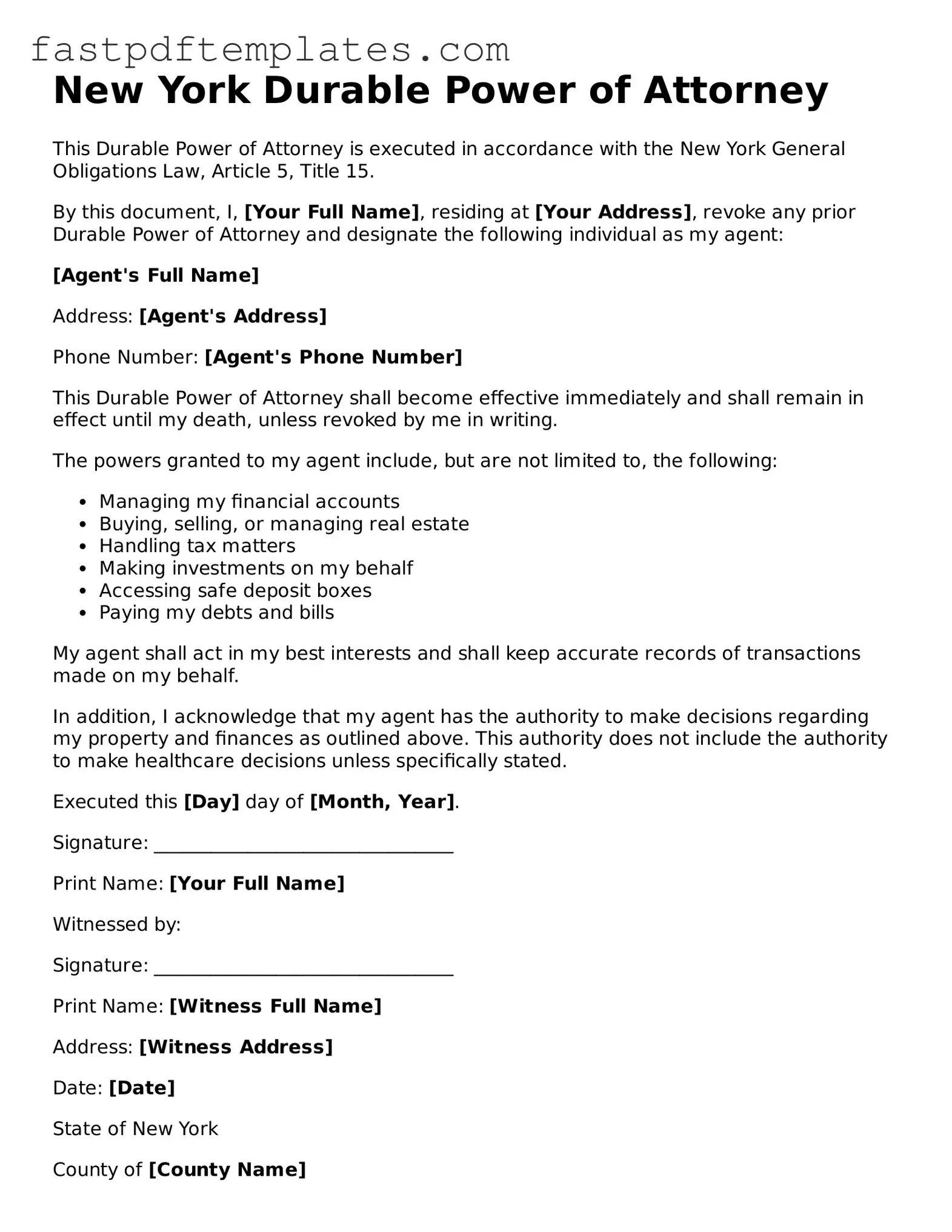New York Durable Power of Attorney
This Durable Power of Attorney is executed in accordance with the New York General Obligations Law, Article 5, Title 15.
By this document, I, [Your Full Name], residing at [Your Address], revoke any prior Durable Power of Attorney and designate the following individual as my agent:
[Agent's Full Name]
Address: [Agent's Address]
Phone Number: [Agent's Phone Number]
This Durable Power of Attorney shall become effective immediately and shall remain in effect until my death, unless revoked by me in writing.
The powers granted to my agent include, but are not limited to, the following:
- Managing my financial accounts
- Buying, selling, or managing real estate
- Handling tax matters
- Making investments on my behalf
- Accessing safe deposit boxes
- Paying my debts and bills
My agent shall act in my best interests and shall keep accurate records of transactions made on my behalf.
In addition, I acknowledge that my agent has the authority to make decisions regarding my property and finances as outlined above. This authority does not include the authority to make healthcare decisions unless specifically stated.
Executed this [Day] day of [Month, Year].
Signature: ________________________________
Print Name: [Your Full Name]
Witnessed by:
Signature: ________________________________
Print Name: [Witness Full Name]
Address: [Witness Address]
Date: [Date]
State of New York
County of [County Name]
On this [Day] day of [Month, Year], before me appeared [Your Full Name] to me known and known to me to be the person described in and who executed the foregoing instrument and duly acknowledged to me that he/she executed the same.
Signature of Notary Public: _________________________
Print Name: [Notary Public's Name]
My commission expires: [Expiration Date]
